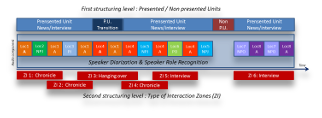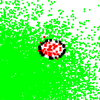REPERE
Objectives The challenge REPERE is part of the objectives of the Content and Interaction Program of the Agence Nationale de la Recherche (ANR), in partnership with the Direction Générale de l’Armement (DGA). REPERE aims at evaluate people recognition within television programs. An evaluation is organized annually with a test in January. Three consortia are funded for a period of 36





